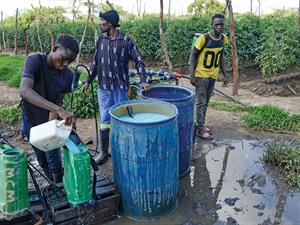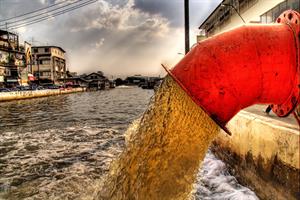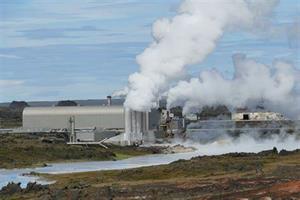PDF chapter test TRY NOW
Agricultural activities

Agricultural activities
Agriculture-related fertilisers, herbicides and insecticides can dissolve in rainwater and run into bodies of water like rivers and lakes. In water bodies, this results in excess of nutrients such as nitrates and phosphates, and hazardous compounds. This process is known as eutrophication. These compounds have the potential to harm aquatic life.
Industrial waste

Industrial waste
Many companies release toxic wastes such as lead, mercury, cyanides and cadmium. When this waste is thrown into water bodies without being regulated, greatly affects living organisms and aquatic life.
Oil spills

Oil spills
Large crude oil and natural gas reserves exist underneath the seabed. With the increasing exploration of crude oil in the oceans, accidents in drilling and transporting oil have also increased. Oil spills cause water pollution, which is harmful to aquatic life. The oil floating on the water surface blocks sunshine, reduces the dissolved oxygen in the water, and suffocates marine organisms.
Thermal pollution

Nuclear power plants
In thermal and nuclear power plants, and many other industries, a huge amount of water is used for cooling. Water used for cooling is discharged at a higher temperature to rivers or original water sources and sometimes with chemicals. This results in a rise in temperature and a reduction in the amount of oxygen dissolved in water, both of which are harmful to aquatic life.
Reference:
https://th.bing.com/th/id/OIP.LwaGos4exses69J8q0oj7QHaFj?pid=ImgDet&rs=1
https://c1.staticflickr.com/1/121/314036511_d488dbcec4_b.jpg
https://c2.staticflickr.com/4/3470/3884430554_1e437e70ff_z.jpg?zz=1
https://th.bing.com/th/id/OIP.qdk-4sEVkJCewfOqtsIoyQHaE8?pid=ImgDet&rs=1
